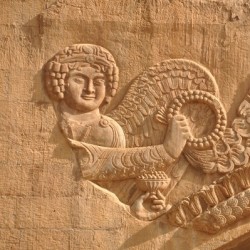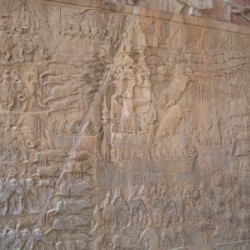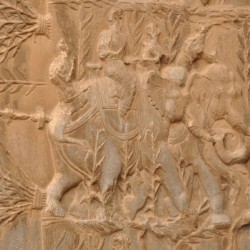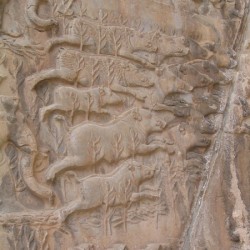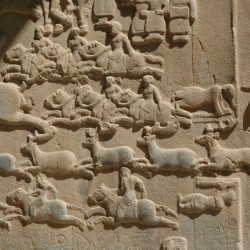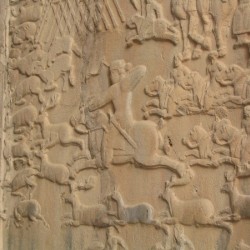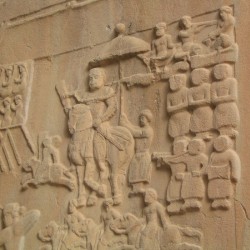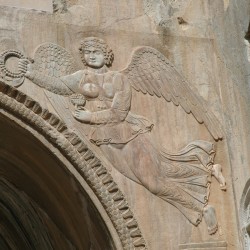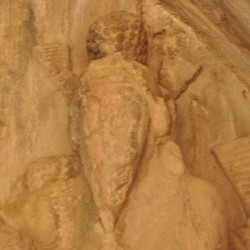Taq-e Bostan, Large cave
Q940045Taq-e Bostan ("the arch of the garden"): site of several Sasanian rock reliefs, on the northeastern outskirts of modern Kermanshah.

The large cave at Taq-e Bostan - technically, not a cave but an iwan - is the youngest and most splendid monument. It contains artistic elements from various cultural traditions and was created by Khusrau II the Victorious (r.590-628), the last great king of Sasanian Persia before the arrival of Islam.
It consists of several parts. The upper section of the central relief shows the king's investiture. From the right, the supreme god Ahuramazda hands over a ring to Khusrau, who is standing in the center. This ring, called cydaris, is the symbol of power. From the left, the water goddess Anahita, carrying a small jar, presents a second ring. This composition is inspired by sixth-century Byzantine apsidal paintings (with Christ between two saints). Khusrau's belt, caftan, and handkerchief, however, are inspired by the art of the people from the steppe.
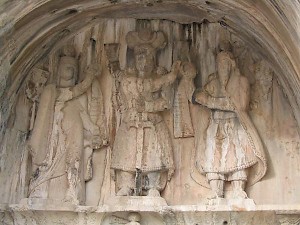
Khusrau embarked upon a career as a conqueror, on several occasions defeating the Byzantines, who were weakened by a long Italian war. His armies invaded Syria and captured Jerusalem in 614, taking with him the relic of the True Cross. The Persian soldiers went on to invade Egypt, took Alexandria, and in 626, their advance guards paused only a mile from Constantinople. The Persians even occupied Cyprus and Rhodes. It seemed as if the ancient Achaemenid Empire, the model of the Sasanians, had been restored.
The large cave of Taq-e Bostan was created to celebrate these successful campaigns and it comes as not surprise that we find the great conqueror represented a second time, this time as a heavy cavalry man.

However, the Byzantine emperor Heraclius trained an army, and after some initial victories, he invaded Assyria and Mesopotamia in 627. These campaigns, which have been called "the first crusades", were extremely successful. The Persian army was defeated in 627 at Nineveh, mutinied, and had Khusrau murdered (628). His successor Ardašir IV made peace and the relic of the True Cross was restored to Jerusalem. The war had exhausted both sides and not much later, the Near East was conquered by the armies of Islam.

The reliefs of Khusrau's cave at Taq-e Bostan represent the last flowering of Sasanian art. To the left and right of the central scene, we can discern two magnificent huntings scenes. To the left, the king can be seen standing in a boat, taking aim at some wild boars. His attendants are also represented, like these hunters on elephant back. This may be inspired by Indian art. After all, the natural habitat of elephants is not in Iran.
On the opposite wall, we can see another hunting scene. This time, the king is seated on a horse. His attendants are trying to catch stags.
The outside of the large cave has been decorated too. There are beautiful floral motifs, and two Victories are shown in the spandrels. These winged deities are of course a Graeco-Roman influence.
Literature
- Louis Vanden Berghe, Reliefs rupestres de l' Iran ancien (1983 Brussels), #81-84.
